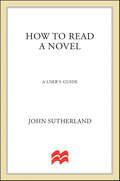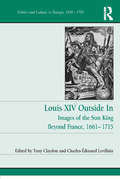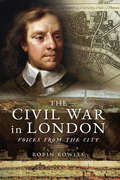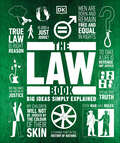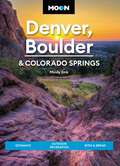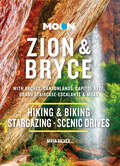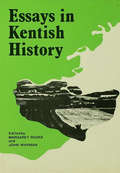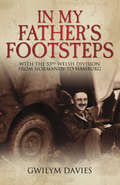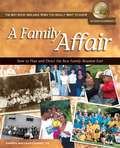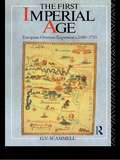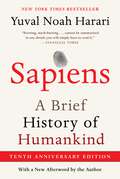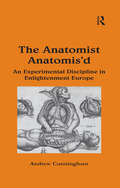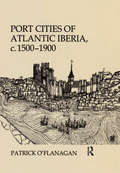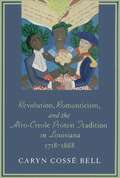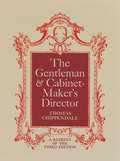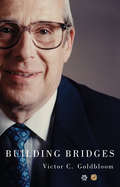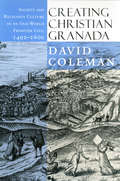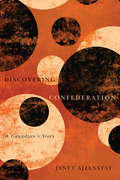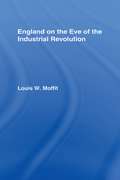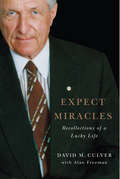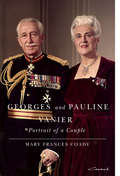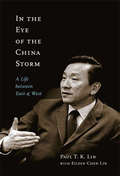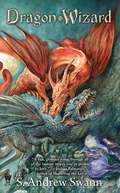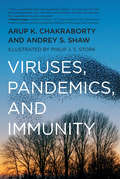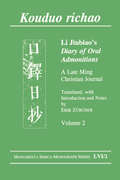- Table View
- List View
How to Read a Novel: A User's Guide
by John Sutherland"Do we still know how to read a novel?" John Sutherland, Chairman of the 2005 Booker Prize Committee, asks. His disheartened answer is an unequivocal, "No." But Sutherland has not given up hope. With acerbic wit and intellect, he traces the history of what it used to mean to be well-read and tells readers what it still means today. Using this delightful book as a means to an end, he reminds readers how the delicate charms of fiction can be at once wonderful and inspired and infuriating. On one level this is a book about novels: how they work, what they're about, what makes them good or bad, and how to talk about them. At a deeper level, this is a book in which one of the most intimate tête-à-têtes is described—one in which a reader meets a novel. Will a great love affair begin? Will the rendezvous end in disappointment? Who can say? In order for the relationship to take its appropriate course all the details must be clearly acknowledged and understood for their complexities: plot, point of view, character, style, pace, first and last sentences, and even beauty. Still, Sutherland knows a true understanding of fiction is more than a flirtation with text and style—it is a business. Taking his readers on a trip to the bookshop, he helps them judge a book by its cover based on design and color, wondering aloud what genre might be best, even going so far as to analyze one of the latest American bestsellers to further help the buying reader choose the novel that is right for him or her. In a book that is as wry and humorous as it is learned and opinionated, John Sutherland tells you everything you always wanted to know about how to read fiction better than you do now (but, were afraid to ask).
Louis XIV Outside In: Images of the Sun King Beyond France, 1661-1715 (Politics and Culture in Europe, 1650-1750)
by Tony Claydon Charles-Édouard LevillainLouis XIV - the ’Sun King’ - casts a long shadow over the history of seventeenth- and eighteenth-century Europe. Yet while he has been the subject of numerous works, much of the scholarship remains firmly rooted within national frameworks and traditions. Thus in France Louis is still chiefly remembered for the splendid baroque culture his reign ushered in, and his political achievements in wielding together a strong centralised French state; whereas in England, the Netherlands and other protestant states, his memory is that of an aggressive military tyrant and persecutor of non-Catholics. In order to try to break free of such parochial strictures, this volume builds upon the approach of scholars such as Ragnhild Hatton who have attempted to situate Louis’ legacy within broader, pan-European context. But where Hatton focused primarily on geo-political themes, Louis XIV Outside In introduces current interests in cultural history, integrating aspects of artistic, literary and musical themes. In particular it examines the formulation and use of images of Louis XIV abroad, concentrating on Louis' neighbours in north west Europe. This broad geographical coverage demonstrates how images of Louis XIV were moulded by the polemical needs of people far from Versailles, and distorted from any French originals by the particular political and cultural circumstances of diverse nations. Because the French regime’s ability to control the public image of its leader was very limited, the collection highlights how - at least in the sphere of public presentation - his power was frequently denied, subverted, or appropriated to very different purposes, questioning the limits of his absolutism which has also been such a feature of recent work.
The Civil War in London: Voices from the City
by Robin RowlesThe Civil War years of the 1640s were amongst the most tumultuous in British history. The conflict between King Charles I and Parliament strained and split the social fabric of the British Isles. People of all classes who had previously coexisted peacefully found themselves opposing each other on political, religious, and economic grounds. Society was literally 'by the sword divided'.Much has been written on the subject to date. This book is different. London is its focus, with key players such as the Lord Mayor, the livery companies, the Church, and citizens, viewed through the city's lens and the streets around St Paul's and Cheapside. In looking at seemingly everyday events, unusual questions are raised: for example, where can you find a little known statue of Oliver Cromwell; what happened to the Cheapside Cross; who was Nemehiah Wallington and why was he important?The result of a London walk devised by the author, the books learned yet accessible approach will appeal to anyone interested in a new way of looking at a popular event in history. Bookended by the death of a Tudor queen and the beheading of a Stuart king, its chapters walk us through what happened in-between.
The Law Book (DK Big Ideas)
by DKLearn about the most important legal milestones in history in The Law Book.Part of the fascinating Big Ideas series, this book tackles tricky topics and themes in a simple and easy to follow format. Learn about Law in this overview guide to the subject, great for novices looking to find out more and experts wishing to refresh their knowledge alike! The Law Book brings a fresh and vibrant take on the topic through eye-catching graphics and diagrams to immerse yourself in. This captivating book will broaden your understanding of Law, with:- More than 90 ground-breaking legal milestones- Packed with facts, charts, timelines and graphs to help explain core concepts- A visual approach to big subjects with striking illustrations and graphics throughout- Easy to follow text makes topics accessible for people at any level of understandingThe Law Book is a captivating introduction to the legal precedents, and religious, political, and moral codes that have shaped the world we live in, aimed at adults with an interest in the subject and students wanting to gain more of an overview. Discover the most important milestones in legal history, from the Code of Hammurabi to groundbreaking legislation including Magna Carta and the Abolition of the Slave Trade Act, all through exciting text and bold graphics.Your Law Questions, Simply ExplainedThis engaging overview goes into legal history across the world, all the way into the 21st century, with copyright in the digital age, same-sex marriage, and the &“right to be forgotten&”. If you thought it was difficult to learn about legislations and legal history, The Law Book presents key information in an easy to follow layout. Learn about the most important breakthroughs, like the fight for universal suffrage and workers&’ rights, and the establishment of international legal bodies like INTERPOL and the European Court of Justice.The Big Ideas SeriesWith millions of copies sold worldwide, The Law Book is part of the award-winning Big Ideas series from DK. The series uses striking graphics along with engaging writing, making big topics easy to understand.
Moon Denver, Boulder & Colorado Springs: Getaways, Outdoor Recreation, Bites & Brews (Travel Guide)
by Mindy SinkWorld-class breweries, rugged mountain peaks, and funky college town vibes: dive into the diversity of the Front Range with Moon Denver, Boulder & Colorado Springs. Inside you'll find:Flexible itineraries, like a week exploring Denver, Boulder, and Colorado Springs and day trips to nearby ski resorts and Rocky Mountain National Park The top outdoor adventures: Go rafting on the Cache La Poudre river, rock-climb in the Flatirons, or hike slickrock trails to stunning mountain vistas. Ski the fresh powder at Loveland or Winter Park and relax with an après-ski drink Must-see highlights and unique experiences: Check out a new exhibit at the Denver Art Museum, catch a performance under the open sky at Red Rocks Amphitheatre, or explore the Wild West at the Museum of the American Cowboy The best local flavors: Indulge in the offerings of a farm-to-table restaurant, try gourmet treats at a buzzing public market, or chat with locals over a delicious microbrew Honest advice from Denver local and lifelong adventurer Mindy Sink on when to go, where to eat, and where to stay Full-color photos and detailed maps throughoutFocused coverage of Denver, Boulder, Colorado Springs, Fort Collins, Golden, and the east side of Rocky Mountain National Park Thorough background on local culture, weather, health and safety, wildlife, and history Find your adventure with Moon Denver, Boulder & Colorado Springs. Exploring beyond the Mile-High City? Try Moon Colorado. Sticking to the park? Pick up Moon Rocky Mountain National Park. About Moon Travel Guides: Moon was founded in 1973 to empower independent, active, and conscious travel. We prioritize local businesses, outdoor recreation, and traveling strategically and sustainably. Moon Travel Guides are written by local, expert authors with great stories to tell—and they can't wait to share their favorite places with you. For more inspiration, follow @moonguides on social media.
Moon Zion & Bryce: Hiking & Biking, Stargazing, Scenic Drives (Moon National Parks Travel Guide)
by Maya SilverSpark your sense of wonder and immerse yourself in the awe-inspiring landscape of Utah's five national parks. Inside Moon Zion & Bryce you'll find:Flexible Itineraries: Unique and adventure-packed ideas ranging from one day in each park to a week-long road trip covering all of them, designed for outdoor adventurers, road-trippers, families, and more The Best Hikes in Utah's National Parks: Individual trail maps, mileage and elevation gains, and backpacking options for Zion, Bryce Canyon, Canyonlands, Arches, Capitol Reef, and Grand Staircase-Escalante Experience the Outdoors: Trek between the thousand-foot walls of the Narrows, hike Angels Landing to unbelievable canyon views, and marvel at hoodoos in Bryce. Soak up the serenity of winter on cross-country skis or take a week-long road trip to hit every park on your list. Contemplate ancient Indigenous rock art throughout the parks, mountain-bike through the desert in Moab, and stay late to spot constellations in the dark sky How to Get There: Up-to-date information on gateway towns like Moab, park entrances, park fees, and tours Where to Stay: Campgrounds, resorts, and more both inside and outside the parks Planning Tips: When to go, what to pack, safety information, and how to avoid the crowds, with full-color photos and easy-to-use maps throughout Expertise and Know-How: Utah-based outdoorswoman Maya Silver shares her tips for travelers who want to backpack, mountain bike, raft, rock climb, hike, and more Find your adventure in Zion and Bryce with Moon. Visiting more of North America's incredible national parks? Try Moon USA National Parks, Moon Yellowstone & Grand Teton, or Moon Best of Grand Canyon. Hitting the road? Try Moon Southwest Road Trip. About Moon Travel Guides: Moon was founded in 1973 to empower independent, active, and conscious travel. We prioritize local businesses, outdoor recreation, and traveling strategically and sustainably. Moon Travel Guides are written by local, expert authors with great stories to tell—and they can't wait to share their favorite places with you. For more inspiration, follow @moonguides on social media.
Essays in Kentish History Cb: Essays Kentish History
by MARGARET ROAKE AND JOHN WHYMANFirst published in 1976. Routledge is an imprint of Taylor & Francis, an informa company.
In My Father's Footsteps: With the 53rd Welsh Division from Normandy to Hamburg
by Gwilym DaviesIn 1944-45, Capt. G.H. Davies served with the hard-fighting 53rd Welsh Division. He was an artillery officer in command of a battery of 25-pdr field guns and saw action from Normandy to the final surrender of Nazi Germany. Capt. Davies was present at the Normandy battles, the fierce fighting for s'Hertogenbosch and the Battle of Arnhem.During the course of the war, Capt. Davies kept a diary and also snatched a few photographs on his treasured camera. When the opportunity arose Capt. Davies liberated a camera from a fallen SS officer and, after the war, had the film developed. The film contained graphic images of the war from the German side of the line.Seventy years on from the events, the wartime diary, the photographs of the guns and the photographs taken by the dead SS officer were the inspiration for the son of Capt. Davies, television producer and writer Gwilym Davies, to undertake an emotional return to the battlefields, which his father had described in his diary.The result of that pilgrimage is an important new book which builds upon the wartime diary and the photographs to produce a powerful record of one man's war service with the guns of the 53rd Welsh Division. The book also contrasts the experience of Capt. Davies with those of the Germans on the other side of the line. Gwilym Davies is himself an accomplished photographer and his photographs of the 70th anniversary celebrations and the memorials provide a poignant counterpoint to the events of 1944.
A Family Affair
by Sandra Maclean CluniesWhether planning a small annual get-together or a once-in-a-lifetime gathering of hundreds, A Family Affair is a step-by-step guide to the planning, promotion, execution and documentation of the best family reunion ever. Filled with hundreds of practical and specific instructions, A Family Affair carefully guides the reader through: The steps to set up a family reunion (establishing a purpose and budget, contacting relatives, planning the place and time). Making people aware of it (by snail mail, e-mail, and phone; dealing with grumpy uncles). Running the reunion (kids, food, events, and pictures). Following up with memories that participants will treasure (pictures, stories, and more). The book is arranged in logical step-by-step sequence. There are checklists and forms to simplify the paperwork, websites and other references for further information on topics of special interest, and tips from others who have held successful reunions.
The First Imperial Age: European Overseas Expansion 1500-1715
by Geoffrey V. ScammellFirst published in 1989. Routledge is an imprint of Taylor & Francis, an informa company.
Sapiens [Tenth Anniversary Edition]: A Brief History of Humankind
by Yuval Noah HarariNew York Times Readers’ Pick: Top 100 Books of the 21st CenturyThe tenth anniversary edition of the internationally bestselling phenomenon that cemented Yuval Noah Harari as one of the most prominent historians of our time—featuring a new afterword from the author.One hundred thousand years ago, at least six human species inhabited the earth. Today there is just one. Us. Homo sapiens. How did our species succeed in the battle for dominance? Why did our foraging ancestors come together to create cities and kingdoms? How did we come to believe in gods, nations, and human rights; to trust money, books, and laws; and to be enslaved by bureaucracy, timetables, and consumerism? And what will our world be like in the millennia to come?In Sapiens, Professor Yuval Noah Harari spans the whole of human history, from the very first humans to walk the earth to the radical—and sometimes devastating—breakthroughs of the Cognitive, Agricultural, and Scientific Revolutions. Drawing on insights from biology, anthropology, paleontology, and economics, and incorporating full-color illustrations throughout the text, he explores how the currents of history have shaped our human societies, the animals and plants around us, and even our personalities. Can we ever free our behavior from the legacy of our ancestors? And what, if anything, can we do to influence the course of the centuries to come?Bold, wide-ranging, and provocative, Sapiens integrates history and science to challenge everything we thought we knew about being human: our thoughts, our actions, our heritage...and our future.
The Anatomist Anatomis'd: An Experimental Discipline in Enlightenment Europe (The History of Medicine in Context)
by Andrew CunninghamThe eighteenth-century practitioners of anatomy saw their own period as 'the perfection of anatomy'. This book looks at the investigation of anatomy in the 'long' eighteenth century in disciplinary terms. This means looking in a novel way not only at the practical aspects of anatomizing but also at questions of how one became an anatomist, where and how the discipline was practised, what the point was of its practice, what counted as sub-disciplines of anatomy, and the nature of arguments over anatomical facts and priority of discovery. In particular pathology, generation and birth, and comparative anatomy are shown to have been linked together as sub-disciplines of anatomy. At first sight anatomy seems the most long-lived and stable of medical disciplines, from Galen and Vesalius to the present. But Cunningham argues that anatomy was, like so many other areas of knowledge, changed irrevocably around the end of the eighteenth century, with the creation of new disciplines, new forms of knowledge and new ways of investigation. The 'long' eighteenth century, therefore, was not only the highpoint of anatomy but also the endpoint of old anatomy.
Port Cities of Atlantic Iberia, c. 1500–1900
by Patrick O'FlanaganCharting the evolution of the port cities of Atlantic Spain and Portugal over four centuries, this book examines the often dynamic interaction between the large privileged ports of Lisbon, Seville and Cadiz (the Metropoles) and the smaller ports of, among others, Oporto, Corunna and Santander (the Second Tier). The book particularly focuses on the implications of state-sponsored commercial policies for the main ports of Atlantic Iberia during the monopoly period extending from 1503 to c.1778, and briefly considers the implications of the suppression of monopoly for these centres over the remainder of the nineteenth century. Patrick O'Flanagan employs a wealth of source material to provide a multi-faceted survey of the growth of these port cities, moving deftly from local concerns to regional developments and global relationships. Beyond Spain and Portugal, the book also considers the important role played by the Atlantic archipelagoes of the Canaries, the Azores and Madeira. This formidable study is an essential addition to the library of those studying Atlantic Iberia, historical geography, and transatlantic economic relationships of this period.
Revolution, Romanticism, and the Afro-Creole Protest Tradition in Louisiana, 1718–1868
by Caryn Cossé BellWith the Federal occupation of New Orleans in 1862, Afro-Creole leaders in that city, along with their white allies, seized upon the ideals of the American and French Revolutions and images of revolutionary events in the French Caribbean and demanded Liberté, Egalité, Fraternité. Their republican idealism produced the postwar South's most progressive vision of the future. Caryn Cossé Bell, in her impressive, sweeping study, traces the eighteenth-century origins of this Afro-Creole political and intellectual heritage, its evolution in antebellum New Orleans, and its impact on the Civil War and Reconstruction.
The Gentleman and Cabinet-Maker's Director
by Thomas ChippendaleThomas Chippendale (1718-79) was the most famous and most skilled of England's master cabinet-makers. So synonymous with excellence in design and craftsmanship was he that his name has been given to the most splendid period of English furniture design.In 1774, Chippendale issued a catalogue of all his designs, a magnificent compilation of 160 engraved plates representing the prevailing furniture styles, particularly the French (Louis XXV), Gothic, and Chinese-manner pieces for which he was best known. The Gentleman and Cabinet-Maker's Director, the most important and thorough catalogue of furniture designs that had ever been published in England, was enormously influential, spreading quickly throughout the Continent and the colonies and guiding the style and construction of furniture everywhere. A second edition was formed the following year, and a third in 1762. Today this classic collection is a very rare and highly valued work.This volume is an unaltered and unabridged republication of the 1762 edition of The Gentleman and Cabinet-Maker's Director. The articles of furniture depicted are extremely varied: chairs, sofas, canopy and dome beds, window cornices, breakfast tables, shaving tables, commodes, chamber organs, cabinets, candle stands, cisterns, chimney pieces, picture frames, frets, and other decorations. The plates contain elegant drawings that show the unique combination of solidity of construction and lightness and grace that was the Chippendale trademark, along with many construction diagrams, elevations, and enlargements of moldings and other details. In addition to the plates, this volume also includes a supplement of photographs of sixteenth-century Chippendale-style pieces, including some executed by Chippendale, complete captions to the photos, and a short biographical sketch of Chippendale by N. I. Bienenstock, editor of Furniture World.The Gentleman and Cabinet-Maker's Director is an indispensable guide for antiquarians, furniture dealers, and collectors, and a treasury of ideas for today's designers. Art lovers and other readers will also find it a delightful browsing book.
Building Bridges
by Victor C. GoldbloomA pediatrician, provincial politician, and pioneer of interfaith dialogue, Victor Goldbloom (b. 1923) has led a rich and varied life. Deeply committed to social issues, his dedication to reconciliating French and English, federalists and sovereignists, Christians and Jews, and his understanding of public health, the environment, and minority communities are unparalleled. Born in Montreal, Goldbloom received his medical degree from McGill University in 1945. A practising pediatrician for many years, he entered public life in 1962 as a governor of the College of Physicians and Surgeons of Quebec and in 1966 was elected to the Quebec Legislature. In 1970 he became the first member of Quebec's Jewish community to serve in the provincial cabinet, under Premier Robert Bourassa. A minister of the National Assembly until 1979, Goldbloom served as Quebec's first environment minster, and later as municipal affairs minister and minister responsible for the Olympics Installations Board. In the early 1990s he became Canada's Commissioner of Official Languages. In Building Bridges - a collection of personal anecdotes, media coverage of his impressive career, and transcriptions of two historic speeches - Goldbloom recounts the details of his remarkable life and lifelong commitment to Quebec and to Canada.
Creating Christian Granada
by David ColemanCreating Christian Granada provides a richly detailed examination of a critical and transitional episode in Spain's march to global empire. The city of Granada-Islam's final bastion on the Iberian peninsula-surrendered to the control of Spain's "Catholic Monarchs" Isabella and Ferdinand on January 2, 1492. Over the following century, Spanish state and Church officials, along with tens of thousands of Christian immigrant settlers, transformed the formerly Muslim city into a Christian one. With constant attention to situating the Granada case in the broader comparative contexts of the medieval reconquista tradition on the one hand and sixteenth-century Spanish imperialism in the Americas on the other, Coleman carefully charts the changes in the conquered city's social, political, religious, and physical landscapes. In the process, he sheds light on the local factors contributing to the emergence of tensions between the conquerors and Granada's formerly Muslim, "native" morisco community in the decades leading up to the crown-mandated expulsion of most of the city's moriscos in 1569-1570. Despite the failure to assimilate the moriscos, Granada's status as a frontier Christian community under construction fostered among much of the immigrant community innovative religious reform ideas and programs that shaped in direct ways a variety of church-wide reform movements in the era of the ecumenical Council of Trent (1545-1563). Coleman concludes that the process by which reforms of largely Granadan origin contributed significantly to transformations in the Church as a whole forces a reconsideration of traditional "top-down" conceptions of sixteenth-century Catholic reform.
England on the Eve of Industrial Revolution
by Louis W. MoffitPublished in the year 1963, England on the Eve of the Industrial Revolution is a valuable contribution to the field of Economics.
Expect Miracles: Recollections of a Lucky Life
by David M. CulverExpect Miracles is the personal and professional story of a leader in the worlds of business and culture. David Culver narrates his journey from his upbringing in Montreal's Golden Square Mile, through his studies at McGill and Harvard, his army service during the Second World War, to his impressive rise at Alcan to become chairman and chief executive officer of one of Canada's leading multinational corporations. The memoir provides an inside look into the management of a global company with roots deeply planted in Quebec and offers pragmatic advice on how to grow talent, foster technology, and handle adversity in a far-flung organization. Anecdotes of meeting the likes of Margaret Thatcher, Henry Kissinger, and Jawaharlal Nehru, reveal the experiences of a strong corporate leader who continued to live a Montreal life, while never losing his interest in discovering the world. A man of many interests and talents, Culver reflects on his long love affair with architecture - and his efforts to restore and preserve Montreal's heritage by creating Maison Alcan - and how music and sport helped shape his life. Expect Miracles is evidence of Culver's positive outlook and belief that the most extraordinary things can happen when you least expect them.
Georges and Pauline Vanier
by Mary Frances CoadyGeorges and Pauline Vanier follows their lives and travels across the world - from Canadian military life to the League of Nations, from the inner circles of British government to their harrowing escape from Nazi-occupied France - detailing their disappointments and triumphs during social and political turbulence. With insight and sympathy, Mary Frances Coady tells their dramatic personal story. Revealing their remarkably vibrant personalities, she details the couple's support of the French resistance as well as Georges Vanier's pleas for the Canadian government to accept refugees fleeing Hitler's horrors and his effort to broaden immigration policy. She also recounts the importance of their religious convictions, their controversial standing among Quebecers, and their early advocacy of official bilingualism. An invigorating and well-told tale of their lasting legacies, Georges and Pauline Vanier is the definitive account of the enduring contributions the Vaniers made to the world and to their country.
In the Eye of the China Storm
by Eileen Chen Lin Paul T. K. LinBorn in Vancouver in 1920 to immigrant parents, Lin became a passionate advocate for China while attending university in the United States. With the establishment of the People's Republic, and growing Cold War sentiment, Lin abandoned his doctoral studies, moving to China with his wife and two young sons. He spent the next fifteen years participating in the country's revolutionary transformation. In 1964, concerned by the political climate under Mao and determined to bridge the growing divide between China and the West, Lin returned to Canada with his family and was appointed head of McGill University's Centre for East Asian Studies. Throughout his distinguished career, Lin was sought after as an authority on China. His commitment to building bridges between China and the West contributed to the establishment of diplomatic relations between Canada and China in 1970, to US President Richard Nixon's visit to China in 1972, and to the creation of numerous cultural, academic, and trade exchanges. In the Eye of the China Storm is the story of Paul Lin's life and of his efforts - as a scholar, teacher, business consultant, and community leader - to overcome the mutual suspicion that distanced China from the West. A proud patriot, he was devastated by the Chinese government's violent suppression of student protestors at Tiananmen Square in June 1989, but never lost faith in the Chinese people, nor hope for China's bright future.
Dragon Wizard (Dragon Princess #3)
by S. Andrew SwannIt has been a year since former thief Frank Blackthorne became Princess of Lendowyn and married a dragon. He's coming to terms with his new life, but during the royal anniversary banquet, an elven prince reads a scroll of evil magic and Frank's world is turned upside-down. Again. The scroll's spell causes a murderous rampage in a palace full of noble dignitaries, so it's no surprise Frank's visitors are angry. The Elf-King Timoras threatens war but Frank can't do anything about it: because of the same bit of scroll magic, the ex-Dragon Lucille has taken over the princess's body, unaware that Frank is still there, locked in her skull. And worst of all, the fate of everyone may soon rest on the shoulders of the man responsible for the whole mess, someone who should be safely dead...
Viruses, Pandemics, and Immunity
by Arup K. Chakraborty Andrey ShawHow viruses emerge to cause pandemics, how our immune system combats them, and how diagnostic tests, vaccines, and antiviral therapies work.Throughout history, humans have contended with pandemics. History is replete with references to plagues, pestilence, and contagion, but the devastation wrought by pandemics had been largely forgotten by the twenty-first century. Now, the enormous human and economic toll of the rapidly spreading COVID-19 disease offers a vivid reminder that infectious disease pandemics are one of the greatest existential threats to humanity. This book provides an accessible explanation of how viruses emerge to cause pandemics, how our immune system combats them, and how diagnostic tests, vaccines, and antiviral therapies work-- concepts that are a foundation for our public health policies.
Kouduo richao. Li Jiubiao's Diary of Oral Admonitions. A Late Ming Christian Journal: Translated, with Introduction and Notes by Erik Zurcher, Vol. 2
by Erik ZürcherThe Diary of Oral Admonitions (Kouduo richao) is an invaluable mirror of early Chinese Christianity, as it stands out as the only source that allows a glimpse of Jesuit missionary practice in China on a local level - "accommodation in action" - and of the various responses of the Chinese audience, both converts and interested outsiders. It is a compilation of some five hundred notes "about everything" made by Li Jiubiao and other Christian literati during their conversations with Jesuit missionaries in Fujian between 1630 and 1640. These notes are arranged in chronological order and divided into eight books. The most important Western protagonist in the Diary is the Italian Jesuit Giulio Aleni (1589-1642), called "Master Ai (Rulüe)" in Chinese. The present study and translation of the Diary of Oral Admonitions can be seen as a companion volume to the proceedings of an international conference that was held on Aleni in his native place Brescia in 1994, also published in the Monumenta Serica Monograph Series XLII: "Scholar from the West." Giulio Aleni S.J. (1582-1649) and the Dialogue between China and Christianity, 1997. The present work in two volumes is meant to be a tool for further research. Volume 1 presents a comprehensive introduction to the Diary and its historical context, followed by the annotated translation, both by Erik Zürcher (Leiden), a renown specialist for the study of Christianity in China. It is enhanced by illustrations, partly in colour, and maps. Volume 2 includes a facsimile of the Chinese text (reproducing a copy held in the Roman Archives of the Society of Jesus), a bibliography of Chinese and Western sources as well as secondary literature, and an analytical index with glossary that will enable the reader to trace specific data in the text.
